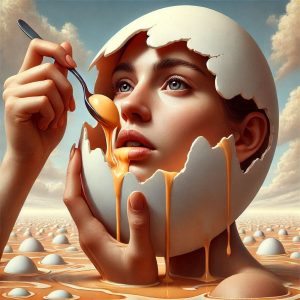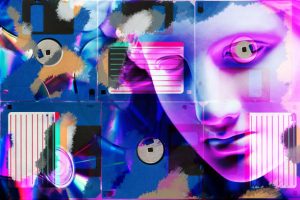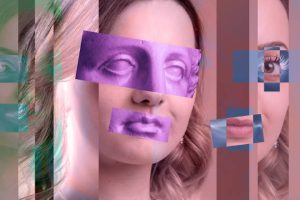Uncensored AI Art – What a New Future Unveils
Open any internet art discussion or Discord chat, and you hear someone talking about the ai art uncensored generators. These sites are the wild west of online artists—the paint has not only taken flight, but the lines have disappeared. This terra incognita has set off a landslide of creative enthusiasm, and, to any artist who has experimented with these tools, it is both enormously exciting and terribly complex.

Liberty with Q Dot
Most artists can recall when they first toyed with popular AI art generators. The tools sparkled, but there was always a conditional attachment. Particular images were dead on the spot by filters. Other creators shrugged and did not stop. Others recognized walls when they could not see them anywhere.
The uncut versions followed. Artists had inexhaustible prospects to explore, without safety barriers, without any moderators, just a raw, uncivilized generation. Others were emancipated, even insurrected. Suddenly, almost any kind of prompt could be personal or shocking. I wasn’t judging. You could, should you have felt the desire, crypticise a dream and turn it into a digital painting. Other users describe it as being granted the keys to the kingdom. It is intoxicating; you can imagine the rush.
Newer Tools, Older Questions
But with an open door, sticky questions come. What can/should you make when you literally can make anything? Is it a freedom that is worthwhile, let it be a source of miserable contents, or can it resonate in the darkest aspects of society? The uncensored label does not simply mean that blocked prompts are no longer present. It implies entering the most ancient disputes about art, duty, and authority—radio-charged.
Artists who rush to these aids are not monsters that intend to cross the boundaries just because of newspapers. Others would like to repin what mainstream tendencies suppress, such as weak feelings or taboos. Ask an AI text generator to create highly personal, controversial content, and the censored-AI prompt will lock up. The unsuppressed hearers.
This can be the sensation of fresh air in your lungs. With a lot of freedom, however, comes a tsunami of examination. Would colleagues want to know: “Everything is possible in AI art?” What about deepfakes or sexually explicit images or things that would harm?” The discussion that enters into heated controversy in the WhatsApp groups overflows to the platform as well, full of angry threads and tweet-based shouting exercises.

Ethics in the Dark
It has become an art of navigation of the ethical landmines. Other artists claim that it is a matter of intention. Other people state that intent is a slippery eel, and it does not matter whether it will have an impact or not. The pros and cons keep turning equivocally; in ethics, there are often no clear-cut solutions.
Imagine an artist with at least partial access to AI to re-experience childhood trauma or to present body dysphoria, things that are, at least occasionally, censored with big tech filter bots. These performers are not out to get a rise and to have fun offending; they are out to attain catharsis. Their reminders can rub shoulders with what censors would look at as hazardous. Unedited tools serve to be lifesavers here; however, they can extend an image of negligence and become root causes of harm by extreme.
Some of the platforms have attempted to circumvent this balancing game with community guidelines in the hope that artists would internalise this themselves. Reality check: That is equivalent to leaving a cookie jar unlocked and hoping that nobody gets to take a midnight snack. It seldom works ideally, and the lures are still there.
Legal Gray Areas and Drawbacks of Copyright
Uncensored AI art walks into a grey area of the law. There is a copyright issue: Is there a boundary that an artificial intelligence can work within as it copies an old master’s style? What of rebuilding the face of a living person? With Uncensored AI, it won’t say no; it will spew out your question, bit by bit. It is the responsibility of the artist to cogitate twice, three times, or not at all.
This grey area has given rise to uneasiness amongst alliances and odd bedfellows. Conservative artists are now condemning AI-generated art as theft since they are now using digital tools they never would have before. Proponents would reply by noting that they have been inspired by past masters going back many centuries. In their view, automating human activities can only accelerate what humans have already been doing. But no limits anymore, everything is allowed, there is a concern about where that will lead everyone.
The Anonymity that is a Double-Edged Sword
The same big attraction of uncensored spaces: these systems frequently allow the artists to be nearly completely anonymous. This gives rise to frankness—the artist can reveal the most unpolished ideas without hesitation. It also protects those who would like to promote or create a shock value to avail such a value. Is complete anonymity a good thing, or does it cause havoc?
There is no painless solution, and the arguments get wider every week. The proponents of anonymity suggest that it provides a chance to fulfil that truth without fear of marginalization. Opponents respond that it protects trolls, bullies, and even potential criminals. Lack of accountability opens up the boundaries between the artist, activist, and agitator.

Community, Accountability, and that Wobbly Middle Ground
Historically, Art societies have self-policed, and it is a combination of peer pressure, backroom encouragement, and shaming. But AI turns the old rules upside-down. The rate is nauseating, the options limitless, and the traditional power brokers have been eliminated. Other artists offer new platforms of digital curation—tags, warnings on content, filtering out content you have to opt in to. Others consider this a disguised resurgence of censorship.
It is often the case of the middle-ground: context is key. Artists open up, engage in dialogue about process, and seek criticism, creating understanding instead of boundaries. However, the strain continues to exist. There is no sharp line between the expression and the harm it causes—this boundary is changing with every throw of the cultural media, social network outrage, and personal revelation.
